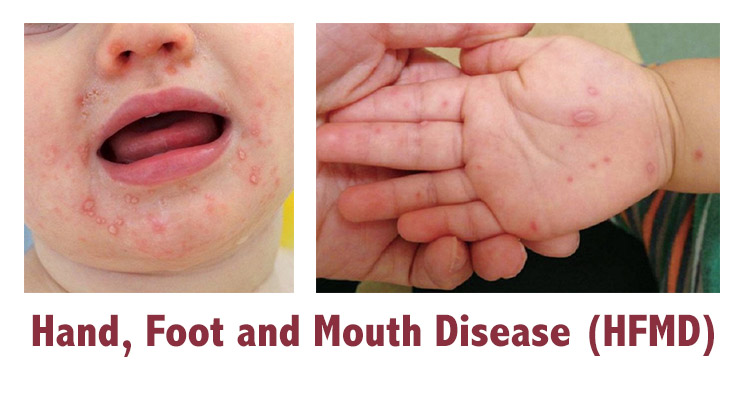Coxsackievirus, and the related Hand, Foot and Mouth Disease (HFMD), is a major cause of illness among infants and young children, with incidents spiking during the summer months. Between January and June this year, over 1,900 children were diagnosed with HFMD, according to the Paediatric Emergency Centre at Hamad Medical Corporation (HMC).
 While coxsackievirus does not generally cause serious illness, it is highly contagious, passing from person to person and remains on surfaces long enough to spread infection from shared objects and toys. Children infected with the coxsackieviruses may be symptom-free, or they may develop a mild illness characterised by fever and non-specific symptoms.
While coxsackievirus does not generally cause serious illness, it is highly contagious, passing from person to person and remains on surfaces long enough to spread infection from shared objects and toys. Children infected with the coxsackieviruses may be symptom-free, or they may develop a mild illness characterised by fever and non-specific symptoms.
 Dr Bashir Ali Youssef, Senior Consultant at the Paediatric Emergency in Al Saad, explained that hand, foot, and mouth disease is a mild, contagious viral infection that is most commonly caused by coxsackievirus A. As the name suggests, the condition affects the parts of the body for which it is named, with symptoms including a low-grade fever, generalised weakness, and small red spots and tiny water blisters on the hands and feet, as well as the buttocks and sometimes, the genitals. Children infected with a more severe form of hand, foot, and mouth disease may develop a sore throat, headache, stiff neck, and sensitivity to light.
Dr Bashir Ali Youssef, Senior Consultant at the Paediatric Emergency in Al Saad, explained that hand, foot, and mouth disease is a mild, contagious viral infection that is most commonly caused by coxsackievirus A. As the name suggests, the condition affects the parts of the body for which it is named, with symptoms including a low-grade fever, generalised weakness, and small red spots and tiny water blisters on the hands and feet, as well as the buttocks and sometimes, the genitals. Children infected with a more severe form of hand, foot, and mouth disease may develop a sore throat, headache, stiff neck, and sensitivity to light.
Good Hand Hygiene
Hand, foot, and mouth disease predominately spreads through droplets of saliva that are expelled by infected children and via fecal contamination. Incidents of the virus are more common during the warmer months, with swimming pools and playgrounds being common places where the virus spread. Young children under the age of five are primarily affected by hand, foot, and mouth disease but it can also be seen in adults.
Dr Youssef said the nature by which the virus is spread underscores the importance of good hand hygiene. He said that it’s important for caregivers to be diligent about good hand hygiene, and to ensure that toys and children’s swimming pools are properly cleaned after each use.
Parents and caregivers can help control the spread of hand, foot, and mouth disease by being conscientious about washing their hands and encouraging children to do the same, especially after going to the toilet. It is also important for parents and caregivers to ensure they wash their hands well after diaper changes, helping young children use the toilet, or coming into contact with stool-soiled material. Frequently cleaning surfaces children touch and washing shared toys is also recommended, as is only visiting swimming pools that are chlorinated.
Dr Youssef said that hand, foot, and mouth disease is usually a minor illness causing only a few days of fever and relatively mild signs and symptoms. However, he cautions that prompt medical attention is necessary if mouth sores or a sore throat prevents a child from drinking fluids, if dehydration is suspected, if the rash spreads to the arms and legs, or if the fever lasts for more than three days.
There is no specific treatment for hand, foot, and mouth disease and there is no available vaccine. Depending on the severity of the virus, a topical oral anaesthetic may help relieve the pain of mouth sores and over-the-counter pain medication may help relieve general discomfort. It is important for parents to keep infected children at home as the virus is transmitted via close personal contact. With proper care and nutrition, most children will fully recover within seven to ten days.
For updates and more information about the services on offer at HMC, visit hamad.qa.






